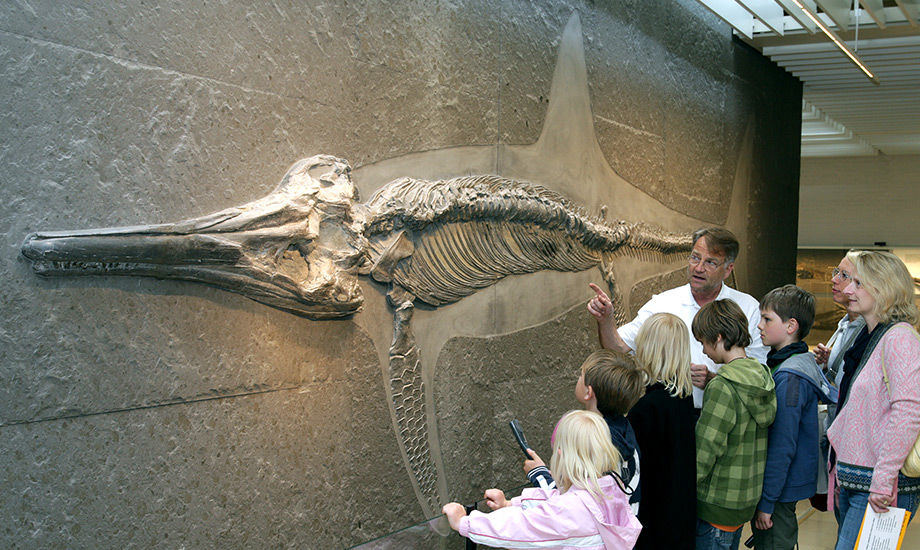Collecting fossils
The richness of fossils in the Swabian Alb encouraged the people of the Alb to study them early on. They enthusiastically collected and searched for ammonites and belemnites and established private collections.
It is therefore hardly surprising that the Tübingen scientists Quenstedt and Hilgendorf examined the fossils of the Alb in more detail and laid the scientific foundation that contributed to the trisection of the Jurassic and also to the international fame of the Swabian Alb. The various fossils tell the story of the Swabian Alb and of the living conditions of the tropical sea from the Jurassic period. However, this geological history can only be reconstructed if we pay attention to the context of the finds and examine and read the entire "book" of the earth's history. It is therefore important to approach these witnesses of the past, some of which are 201 million years old, with appropriate care.
Many collections that have been created by private individuals in recent decades are unfortunately poorly or not at all documented in writing and can therefore only tell the Earth's history in fragments. In addition, these collections are often very large, so that there are no museums that can exhibit these finds, some of which amount to several thousand kilograms.
Fossils - even if they are so numerous in the Swabian Alb - should be left in their natural environment as they are pieces of a eternal mosaic that is not reconstructable anymore as soon as the fossil is taken away by anyone who is not an expert. Visitors to the Swabian Alb can approach fossils in museums. There, on the basis of existing collections and in exciting exhibitions, they can learn about the various creatures of the past and marvel at the creatures that cavorted in the sea of the Jurassic period 201 to 145 million years ago.
